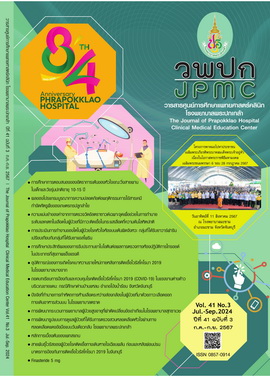Basic Principle of PET Scans
Main Article Content
Abstract
Positron Emission Tomography (PET) imaging has revolutionized medical diagnostics by offering unique insights into the functional and molecular processes within the human body. PET utilizes radiotracers, typically biologically active molecules labeled with positron-emitting isotopes, administered intravenously, orally or inhalation to patients. As these radiotracers decay, they emit positrons, which subsequently annihilate with nearby electrons, producing pairs of gamma rays. Detectors surrounding the patient capture these gamma rays, enabling precise localization. By analyzing the emitted radiation patterns, PET scanners construct three-dimensional images reflecting the distribution and concentration of radiotracers in tissues and organs. Through the quantification of radiotracer uptake, PET facilitates the evaluation of metabolic and physiological processes, aiding in the diagnosis, staging, and monitoring of various diseases, including cancer, neurological disorders, and cardiovascular conditions. Moreover, PET’s ability to detect biochemical alterations at the molecular level holds promise for personalized medicine and therapeutic development. Understanding the basic principles of PET scans is crucial for optimizing their clinical utility and advancing medical research, leading the way for improved patient outcomes and enhanced healthcare practices. This article aims to introduce the fundamental principles underlying PET scans.
Article Details

This work is licensed under a Creative Commons Attribution-NonCommercial-NoDerivatives 4.0 International License.
References
O'Malley JP, Ziessman HA. Nuclear medicine and molecular imaging: the requisites. 5th ed. Amsterdam: Elsevier; 2020.
Vaquero JJ, Kinahan P. Positron emission tomography: current challenges and opportunities for technological advances in clinical and preclinical imaging systems. Annu Rev Biomed Eng 2015:17:385-414.
López-Mora DA, Carrió I, Flotats A. Digital PET vs analog PET: clinical implications?. Semin Nucl Med 2022;52:302-11.
Vandenberghe S, Mikhaylova E, D'Hoe E, Mollet P, Karp JS. Recent developments in time-of-flight PET. EJNMMI Phys [Internet]. 2016 [cited 2023 Dec 25];3(1):3. Available from: https://ejnmmiphys.springeropen.com/articles/10.1186/s40658-016-0138-3
Surti S. Update on time-of-flight PET imaging. J Nucl Med 2015;56:98-105.
Boellaard R, Delgado-Bolton R, Oyen WJ, Giammarile F, Tatsch K, Eschner W, et al. FDG PET/CT: EANM procedure guidelines for tumour imaging: version 2.0. Eur J Nucl Med Mol Imaging 2015;42:328-54.
National Health Security Office. NHSO board adds gold patent to PET/CT test as an alternative to assess the stage of lung cancer and lymphoma [internet]. 2021 [cited 2023 Dec 25].Available from: https://www.nhso.go.th/news/3120

